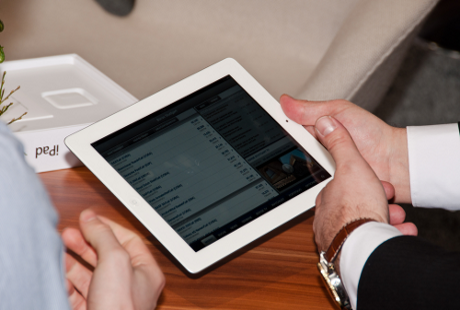Since the 1980s, when City boys lugged around brick-like devices, mobile phones have always had a place in the businessman’s toolkit. So when Apple launched its iPhone three years ago, it was always just a matter of time until it appeared in a work context.
The business use of Apple’s latest device, the iPad tablet, is less immediately obvious. Although tablet PCs are well established for certain niche applications, for most organisations it is not clear what the iPad might replace.
According to Ben Trewhella, chief technology officer of mobile application development agency Mubaloo, the release of the iPad has been something of an anticlimax for business technology enthusiasts. “There is a kick-back against iPads at the moment,” he says. “There was a lot of hype, but now people have got them in their hands they are asking: ‘What is it for again?’”
Interesting Links
A moving platform Why the increasing use of smartphones to support business applications calls for strategic thinking
Augmented reality’s gradual progression The technology’s development resembles the evolution of the web, says Layar’s Maarten Lens-FitzGerald
One company that has found a business application for the iPad is Arhaus, a US-based furniture retailer with 35 stores across 13 states. The company is currently preparing to roll the devices out to all of its delivery drivers.
“I’ve been trying to make our company paperless for a couple of years now,” says the company’s senior vice president of logistics John Roddy. “We currently spend $30,000 a year on the paper that our drivers hand to customers on delivery, and I don’t like that.”
That prompted Roddy to investigate the possibility of using some kind of mobile device. TOA, the software company that provides Arhaus with its inventory management systems, got involved in the project and soon the idea of using the iPad, then still unreleased, came about.
“I’ll be honest, at first I thought the iPad was a joke,” recalls Roddy. But having now had one for 45 days he says he can’t live without it. “It’s a lot lighter than a laptop, but for me it has the same functionality.”
Rather than signing a paper receipt, the customer will now sign the delivery driver’s iPad with their finger. “We had our legal department look at it, and that is characterised as a binding signature as far as the US law is concerned.”
The iPad will also be used as a platform to boost sales, Roddy explains. Before moving the furniture into the customer’s home, the delivery driver will hand the iPad over to the customer and invite them to explore a catalogue application.
“This is a cross-sell opportunity, but we don’t need drivers to be salesmen,” he explains. “The iPad’s functionality is so easy for people to use, we hand it to them with the catalogue [application] open and invite them to finger through.”
In this way, Arhaus hopes to use the iPad’s appeal as a consumer device to drive business. “Knowing our customers, they’re going to be thrilled with this,” says Roddy.
According to enterprise mobility analyst Jack Gold, putting the increasingly diverse range of mobile devices to good use is emerging as an important business competency. “We are seeing, and will continue to see for some time, an explosion of form factors,” he explains. “Companies won’t be able to support every device that comes down the road, but they also can’t be fixed in time. They need to think about what these new tools can do that might benefit their business.”










